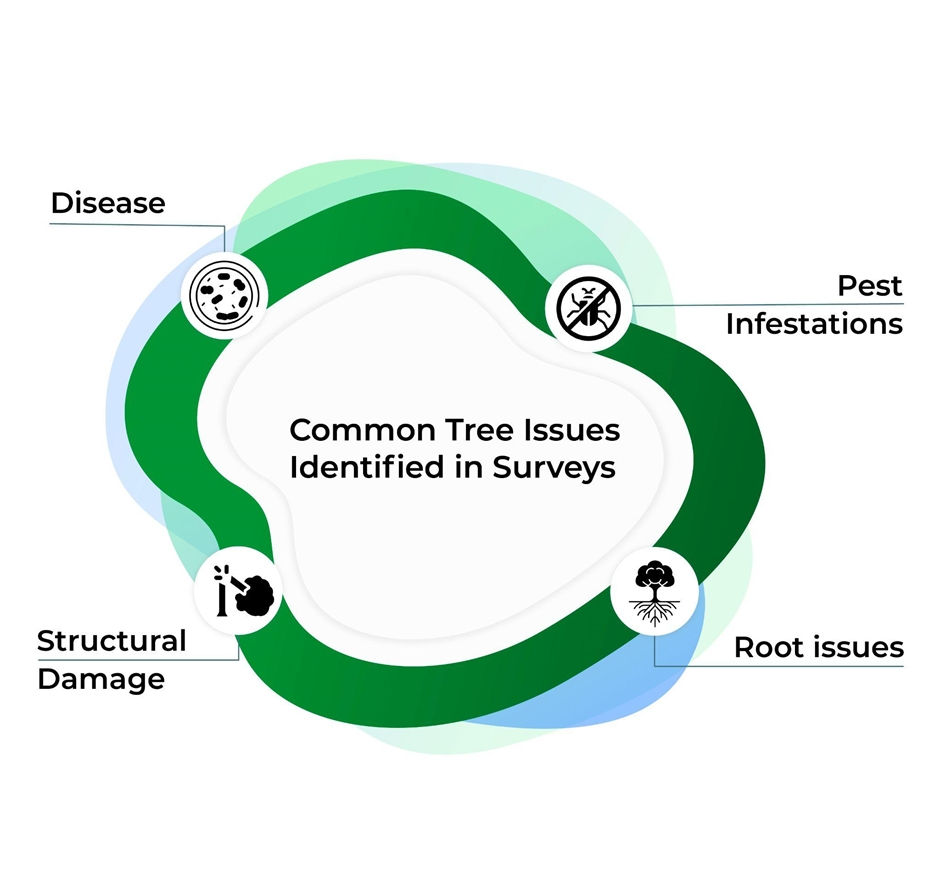Understanding How to Identify & Treat Common Tree Diseases
- Arbour Services

- Dec 3, 2024
- 2 min read

If you have trees on your property, maintaining their health and preventing disease is likely a top priority to keep them healthy and avoid resorting to tree removal. Regular inspections are essential for proactive tree care, and knowing what signs to look out for can help you catch potential issues early.
Read on to learn about common tree diseases and pests, how to identify warning signs, and what steps to take to protect your trees.
Ash Dieback
Ash dieback (Hymenoscyphus Fraxineus) originated in China and was introduced into Europe about 30 years ago. This fungus can infect both young and mature ash trees. Between July and October, the fungus releases spores into the air. When these spores land on ash leaves, the fungus infiltrates the tree and begins to spread.
Over time, the fungus disrupts the tree’s water transport systems, leading to its death. While the tree can initially resist the disease, repeated infections weaken and ultimately kill it within a few years.
Symptoms: Blackened, wilting leaves, diamond-shaped lesions where the branches meet the trunk.
Treatment: Monitoring trees and removing affected branches can slow the spread of the fungus, but tree surveys conducted by professional arborists are recommended.
Dutch Elm Disease
Dutch Elm Disease (Ophiostoma Novo-ulmi) is a devastating fungal infection spread by bark beetles that bore through elm bark. Over the past 50 years, this disease has killed millions of elm trees across the UK. Once an elm becomes infected, the disease rapidly progresses, often resulting in the tree’s swift decline and death.
Symptoms: Yellow leaves that wilt or fall, dark streaks underneath the bark of twigs, and shoots that die back from the tip.
Treatment: Early removal of affected branches can help prevent spread, but tree removal may be required by tree surgeons.
Oak Processionary Moth (OPM)
The Oak Processionary Moth (Thaumetopoea Processionea) is an invasive moth species whose caterpillars can severely weaken oak trees and pose health risks to humans. These caterpillars nest on oak trees, leaving the trees exposed and vulnerable. Additionally, the caterpillars are covered in toxic hairs that can cause rashes and breathing difficulties in people who come into contact with them.
Symptoms: Caterpillars in procession on the trunk nose-to-tail in late spring and early summer, silk nests on trunks or branches.
Treatment: Do not attempt to remove an OPM infestation yourself, as it is a health hazard. Instead, enlist the help of arborists, who are trained to deal with these pests.
Tree Surgeons in Glasgow and the Surrounding Areas
If you notice signs of poor tree health or symptoms of disease, reach out to professional arborists for comprehensive tree surveys.
At Arbour Services, our certified tree surgeons in Glasgow are equipped to inspect the trees on your property and accurately assess their health. With their expertise, arborists can determine whether treatment is possible or if tree removal is necessary and can perform the required services.
Contact Arbour Services' tree surgeons in Glasgow today to schedule one of our tree surveys or discuss tree removal options.



Comments